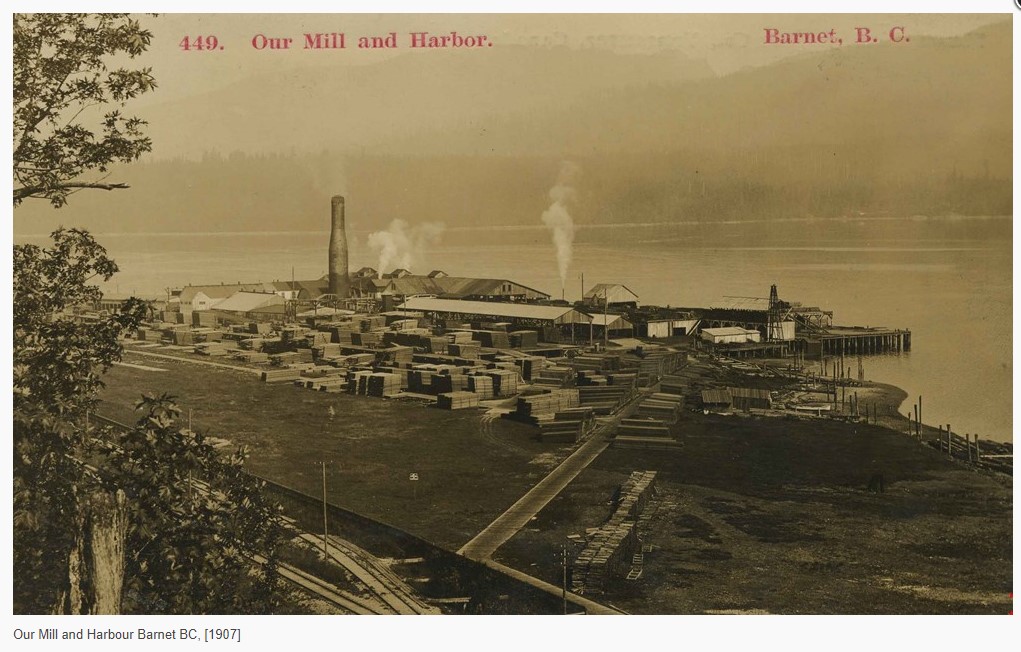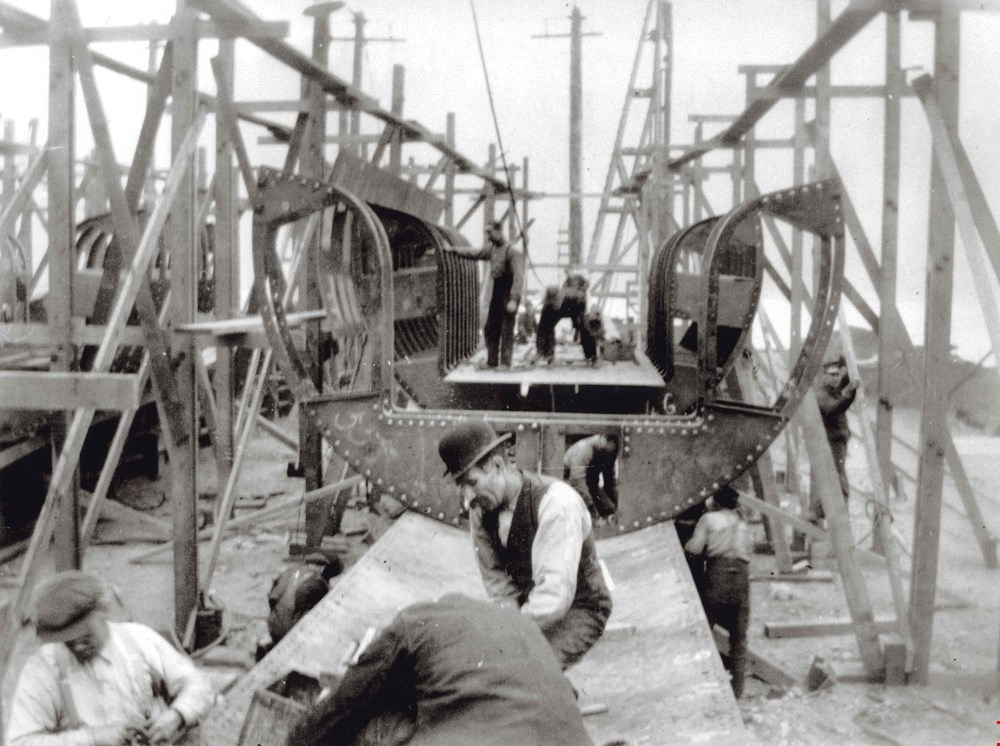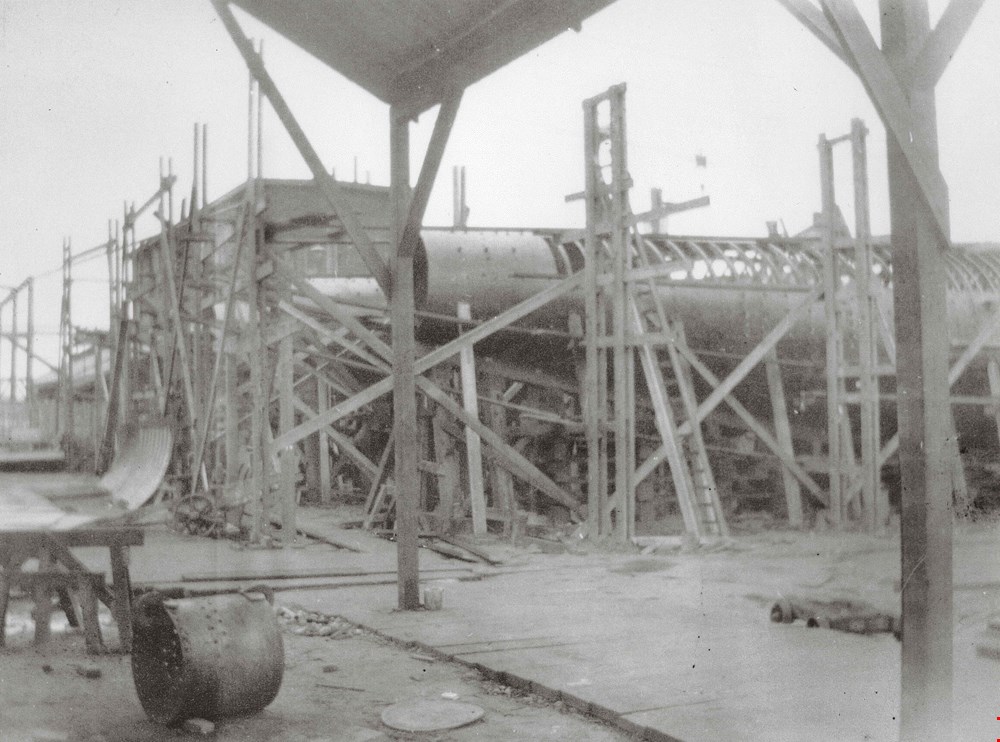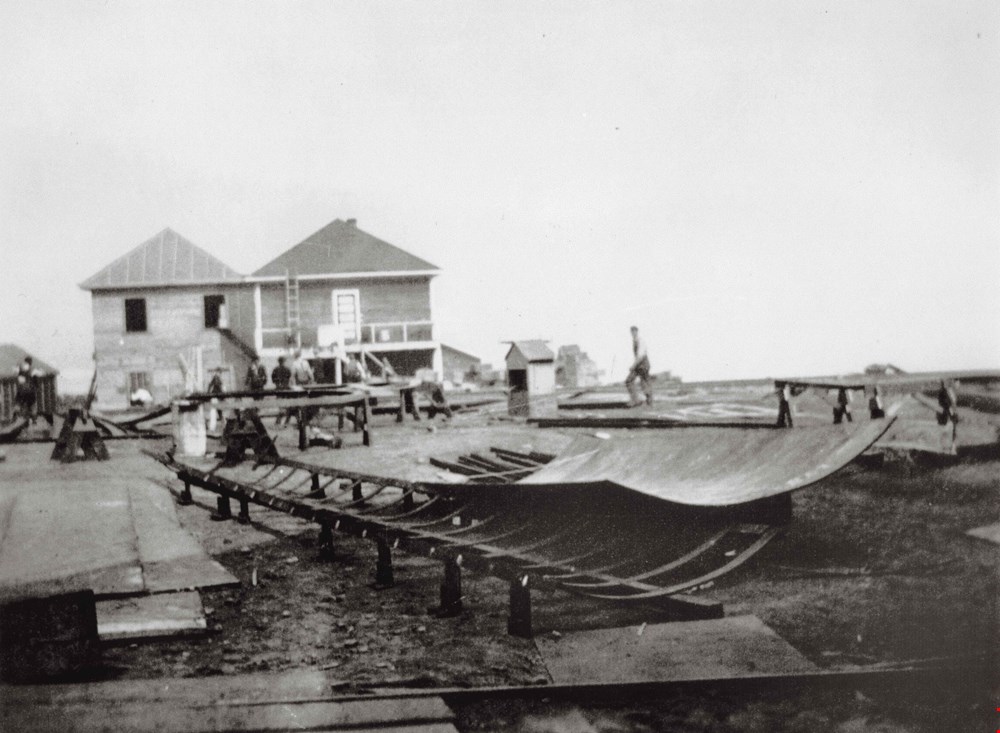At the Barnet Marine Park you can check out the remnants of a once thriving village, sawmills, and Burnaby’s top secret submarine base.
For more stories like this one, check out Vancouver Exposed: Searching for the City’s Hidden History

Took the dog for a walk at the Barnet Marine Park in Burnaby last week and found a whole bunch of fascinating history. There are remnants of a once thriving village built around a saw-mill, and most intriguing, rumours of a secret submarine base.

Submarines come to Burnaby:
In 1914, Russia needed submarines to defend itself against the Germany Navy in the Black Sea. James Venn Paterson headed up a dry dock company in Seattle and had already built H-class subs—he’d sold two of them to the BC government. Problem was, the US was neutral and couldn’t be seen building subs for warring nations, so Paterson started the British Pacific Construction and Engineering Company and smuggled the parts across the border.

Top Secret Plant:
The yard at Barnet was surrounded by a high barbed wire fence and search lights. There was a guard of nine men on loan from the military, and after four weeks the subs were well under way. The top-secret plant soon had 460 employees working day and night, under the ruse that they were constructing oil barges.

In December 1916, three subs were knocked down and shipped from Vancouver to Vladivostock where they would travel to the Baltic and Black Seas by rail. The Barnet plant closed down soon after that over a land dispute.

Jim Wolf, Burnaby City Planner and historian has written about the submarines in his book In the Shadow by the Sea: Recollections of Burnaby’s Barnet Village. He tells me that the submarine assembly plant was on the old Western Steel Company plant. That’s right beside the current Chemtrade Solutions building, which ironically is also behind barbed wire and no trespassing signs.
“The operation was short-lived and they used the existing wharf and plant,” says Jim. “Most of the old steel plant was obliterated with later developments. What you are seeing on site today is the old Bestwood Lumber Plant remains.”
Source: W. Kaye Lamb: Building Submarines for Russia in Burrard Inlet, BC Studies, No. 71, Autumn, 1986.
And, with thanks to Jim Wolf.
© All rights reserved. Unless otherwise indicated, all blog content copyright Eve Lazarus.



7 comments on “Burnaby’s Top Secret Submarine Base”
Do you know it there was a cemetery there?
Sorry, typo, should be Do you know if there was a cemetery there?
Now that is hidden history! Questions to our govt would be why abandon such a facility? Submarines made in Canada for sale! Instead we, as usual had to buy subs from elsewhere further down the war path. 1917 would have ended the orders from Russia anyway.
Now what about this cemetery?
Now that is hidden history! Questions to our govt would be why abandon such a facility? Submarines made in Canada for sale! Instead we, as usual had to buy subs from elsewhere further down the war path. 1917 would have ended the orders from Russia anyway.
Now what about this cemetery?
Because if the Canadian Govt got involved.
We still wouldnt have delivered those subs to Russia….
🙁
Those submarine pieces were shipped to Puget Sound Navy Yard in Bremerton. (Today PSNS in Bremerton.)
“The shipment of the final six was held up pending the outcome of the Russian Revolution of 1917, and the boats were stored in knockdown condition at their construction yard. All six were purchased by the United States Navy on 20 May 1918 and assembled at Puget Sound Navy Yard before being commissioned as H-4 to H-9 in late 1918.”
https://en.wikipedia.org/wiki/United_States_H-class_submarine
In addition to the two references cited for this blog article, author Bill Lightfoot describes the efforts of the naval architect/businessman James Venn Paterson, who set up the Barnet Village submarine yard, as well as a second submarine construction site in downtown Vancouver immediately south of the Immigration Building (since torn down) between the main-line tracks of the CPR. This is very near the present cruise line terminal.
See Chapters 3 and 14 in Lightfoot, Bill. Beneath the Surface: Submarines Built in Seattle and Vancouver 1909-1918, Vancouver: Cordillera Books, 2005. (ISBN 1-895590-31-0
Paterson was also instrumental in Canada acquiring its first submarines, CC-1 and CC2, from a shipyard in Seattle.